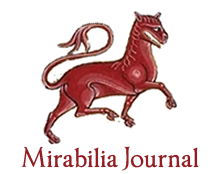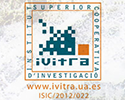Love in the Time of Demons: Thirteenth-Century Approaches to the Capacity for Love in Fallen Angels
Juanita FEROS RUYS
Original title: O amor em tempos demoníacos: diferentes abordagens no século XIII para a capacidade de amar dos anjos caídos
Published in Emotions in the Ancient and Medieval Mediterranean World
Keywords: Demons, Free will, Friendship, Natural love, lust.
Demons in the Middle Ages were primarily known as creatures that could feel only envy, anger, and malicious glee. But there remained an undercurrent in both scholastic thought and monastic tales that also understood demons as creatures once capable−and perhaps still so−of love. This paper examines the capacity for love and friendship attributed to demons in the thirteenth century. It shows how love could be seen as the motivating emotion in their original fall from Heaven, and explores the role love is subsequently thought to have played in both their relationships with each other and their amatory and sexual relationships with humans.
Loyset Liédet (1420-1479): le duché de Bourgogne et des enluminures flamandes
Vinícius Saebel LEMOS
Original title: Loyset Liédet (1420-1479): o ducado borgonhês e as iluminuras flamengas
Published in
Keywords: Duché de Bourgogne, Enluminures, Loyset Liédet, Moyen Âge.
Cet article vise à présenter l’importance du Duché de Bourgogne sous la gouvernance de la Maison Valois (1365-1477) dans la production historique et artistique sur le seuil entre le Moyen Âge et la Modernité. Sa position et sa géographie a facilité le passage des personnes, des idées et des biens de divers types ont fait la région une des plus riches du XVe siècle. Son lien dynastique avec la couronne française et de ses limites en contact permanent avec le royaume français et le Saint-Empire Romain Germanique ne duché sensible à la recherche de maintenir leur existence. La vie des ducs attestent cette quête, en encourageant la production artistique et étaient la source narrative de chroniques témoignent cette demande pour la gloire et la splendeur bourguignonne. Les écrivains et enlumineurs ont été largement employés dans la cour des ducs, leurs guildes ont une action vigoureuse dans la production d’objets d’art, y compris des manuscrits enluminés. Il est de cette association entre l'art et l'histoire en Bourgogne que nous avons sélectionné un de ces maîtres, Loyset Liédet (1420-1479), son histoire et sa production artistique ont été répertoriés et quelques images analysées dans ce travail selon les niveaux de compréhension de Erwin Panofsky (1892-1968).
Lucretii poemata: A linguagem política no De Rerum Natura
Claudia Beltrão da Rosa
Original title: Lucretii poemata: The language of politics in De Rerum Natura
Published in The Philosophical Tradition in the Ancient and Medieval World
Keywords: Epicureanism, Lucretius, Political Ideas.
Lucrezia Borgia (1480-1519): victim and model of romantics, pre-Raphaelites and Victorians
Marc GOMAR CALATAYUD
Original title: Lucrècia Borja (1480-1519): víctima i model de romàntics, prerafaelites i victorians
Published in
Keywords: 19th-c., Femme Fatale, Lucrezia Borgia, Pre-Raphaelite, Romanticism, Victorians.
With the success of the theatrical drama of Victor Hugo and Donizetti’s opera, the historical character of Lucrezia Borgia became a literary theme for artists of the nineteenth century. A beautiful woman, powerful and prepared, she met all the conditions for creators of different movements used her to embody the fears of the century. Even today, the figure of Lucrezia Borgia is determined and conditioned by the popularized image in the Eight hundred in painting presented as the femme fatale in the late fifteenth century was a angelicata donna. Despite the reaction of historians like Gilbert or Gregorovius, who try to reconstruct the Duchess of Ferrara with the authentic documents, Lucrezia Borgia will be too lush Mediterranean to Victorian morals.
L’Ateneu Científic, Literari i Artístic de València and the Renaicense (1870-1876)
Víctor PASTOR BANYULS
Original title: L’Ateneu Científic, Literari i Artístic de València i la Renaixença (1870-1876)
Published in
Keywords: Ateneu, Literature Seccion, Renaissance, València, XIX Century.
In this research we have done a study about the Valencian Renaicence cultural movemment throught the analysis of the activity to Ateneu Científic, Literari i Artístic de València from 1870 to 1876, when the Boletín-Revista del Ateneo de Valencia was published. By the way, we have done the dump about this publication to view the cultural contribution of the valencian writers, so we study the literary and linguistic contribution of the Secció de Literatura.
Man’s “knowledge” and “ignorance” for God in the teaching of Gregory of Nyssa and Nicholas of Cusa
Eirini ARTEMI
Original title: Man’s “knowledge” and “ignorance” for God in the teaching of Gregory of Nyssa and Nicholas of Cusa
Published in Nicholas of Cusa in Dialogue
Keywords: Gregory of Nyssa, Knowledge of God, Nicholas of Cusa, Ousia, attributes.
The knowledge of God has been the main subject of the theological teaching since the expanding of the Christian doctrine and teaching. Ecclesiastical writers as Gregory of Nyssa and Nicholas of Cusa accept that the knowledge about God is conventional and symbolic (deliberately). His attributes are known, however His essence “ousia” is not known. God is in finite. He is unlimited in every kind of perfection or that every conceivable perfection belongs to Him in the highest conceivable way. God is self-existent and does not depend on any thing else for his existence. The biblical I am that I am. Related to divine immutability: God does not undergo any change. God is externally related to the world: no event in the world has any effect on God. God conforms to the substance metaphysics of Greek philosophy. A substance is independent, self- contained, and self - sufficient. Man knows only the God’s attributes and not His “ousia”. This happens, because the finite human mind cannot grasp the essence of the infinite God. Besides God is unknowledgeable and inconceivable to His “ousia” while He is knowledgeable and comprehendible to His energies. It is clear that it only is possible for man to acquire indistinct “amydros” and weak “asthenis” vision of God according to his attributes “ta kathautou”. In this article, we are going to examine this knowledge and vision of God through the writings of eastern and western ecclesiastical writers, Gregory of Nyssa and Nicholas of Cusa.
Margarita Moreira and Antonia Núñez. Inquisition and Cryptojudaism in Mexico, 1646-1647
Antonio CORTIJO OCAÑA
Original title: Margarita Moreira y Antonia Núñez. Inquisición y grupos criptojudíos en México, 1646-1647
Published in Mulier aut Femina. Idealism or reality of women in the Middle Ages
Keywords: Antonia Núñez, Inquisition, Margarita Moreira, Mexico, Practicing Judaism.
This article analyzes two previously-unkown documents from The Bancroft Library (UC Berkeley). These documents refer to the accusation made by the Mexican Inquisition against Margarita Moreira and Antonia Núñez in 1646 and 1647 respectiveley. Both women were accused of practicing Judaism.
Marginalized women. The case of the Castilian concubines
David WAIMAN
Original title: Mujeres marginadas. El caso de las concubinas castellanas
Published in Medieval and Early Modern Iberian Peninsula Cultural History
Keywords: Castile, Concubinage, Concubines, Middle Ages, Sexuality.
Concubinage has been, over the past decade, several investigations. While increasingly know more about concubines and late medieval concubinage. This time we will try to give a new look to the pasts in Castile in the thirteenth and fifteenth centuries. Added to this will be analytical axis as the role of women in concubinage, seeing in them the various forms that are part of that reality.
Marginals, schismatics, heretics: Their religious expression in fourth and fifth century patristics
Susana FIORETTI
Original title: Marginales, Cismáticos, herejes. Su expresión religiosa en la patrística de los siglos IV y V
Published in
Keywords: Christians, Marginals, Schismatics y heretics.
During the fourth century, once Constantine’s politics placed Christian worship on equal footing to Paganism, a fruitful and swift effort to create a corpus of doctrine and thought was carried out. Fourth-century Christians became increasingly vigilant with respect to their own Christian identity when they faced the rapid and sometimes incomplete conversion of the heathen, but fundamentally when facing internal divergences that were becoming more visible and problematic in this new political process. The century witnessed the emergence of numerous marginalized Christian movements that resisted the creation of a Catholic orthodoxy supported by the Empire. Hence, heresy was the hub of the problem, configured as a negative limit for orthodoxy. The “Constantinian Revolution” marked the beginning of the end of the old system, eclectic and tolerant of doctrinal matters, yielding to a religious centralization that would not be limited only to ritualism, but would also extend into the realm of personal behavior and belief. By transforming a persecuted faith into a stable Church, not only was it sought that it be present in society, but that it would control it. Hence, the absolute and exclusive conception of dogma constructed by the Church shows its inability to conceive as possible the coexistence of its preaching with other forms of truth. The center of the philosophical and theological universe was solidly occupied by the truth of the Church, who ended up becoming the arbiter of all discourse. The topic has come a long way and evolved to an intolerance that, undoubtedly, entailed a modification of Roman policies. Many of the works that we have analyzed are a registry of the Church’s struggle against its persecutors and against heretics, who were becoming the biggest threat to its continuity, as understood by many of its contemporaries.
Marin Marais (1656-1728) and the didactic function of the Avertissement
Kristina AUGUSTIN
Original title: Marin Marais (1656-1728) e a função didática dos Avertissement
Published in Music in Antiquity, Middle Ages & Renaissance
Keywords: Avertissement, Early Music, Historically Informed Performance, Marin Marais, Viol.
This text concludes a work begun in 2019 that included the production of an article on the life of the gambist Marin Marais, published in this magazine, with the respective review of primary sources. This was followed by the publication of a second article with the translation of the prefaces (Avertissement) of the five books of Marais. This article seeks to analyze the didactic function of the afore mentioned Avertissement and demonstrate in what aspects they contribute to a better understanding and execution of the works of Marin Marais.






















































































